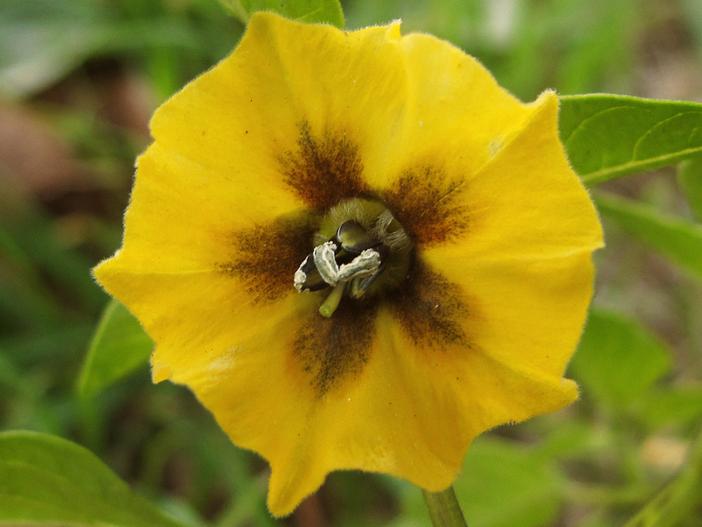Tomatillo
(Physalis ixocarpa)
Tomatillo (Physalis ixocarpa)
/
/

jacinta lluch valero
CC BY-SA 2.0
Image By:
jacinta lluch valero
Recorded By:
Copyright:
CC BY-SA 2.0
Copyright Notice:
Photo by: jacinta lluch valero | License Type: CC BY-SA 2.0 | License URL: https://creativecommons.org/licenses/by-sa/2.0/ | Uploader: jacilluch | Publisher: Flickr













Estimated Native Range
Summary
Physalis ixocarpa, commonly known as Tomatillo or Mexican husk tomato, is a perennial herb that is an annual in colder climates. It is native to Mexico, where it thrives in a variety of habitats including open woodlands, plains, and grasslands. It is particularly prevalent in the highlands of the Northwest and Southwest regions of Mexico. The tomatillo is characterized by its unique lantern-like husk that encases the fruit, which matures to a small, spherical shape and can be green or green-purple when ripe. The plant typically grows to a height of 3-4 feet (0.9-1.2 meters) and spreads to about the same width. It produces yellow flowers that develop into the distinctive fruit in the late summer to early fall.
The tomatillo is valued for its edible fruit, which is a key ingredient in Mexican cuisine, especially in salsa verde. The fruit’s flavor is tart and refreshing, making it a popular choice for culinary use both raw and cooked. Gardeners appreciate the tomatillo for its ease of growth and the unique aesthetic of its husked fruits. It is often grown in vegetable gardens and requires full sun exposure to produce a bountiful harvest. Tomatillos prefer well-drained soils and are relatively drought-tolerant once established, but they do benefit from consistent moisture during the growing season. While generally pest-resistant, they can sometimes be affected by the same diseases and pests that plague other nightshade family members, such as blight and aphids. It is important to rotate crops to prevent soil-borne diseases.CC BY-SA 4.0
The tomatillo is valued for its edible fruit, which is a key ingredient in Mexican cuisine, especially in salsa verde. The fruit’s flavor is tart and refreshing, making it a popular choice for culinary use both raw and cooked. Gardeners appreciate the tomatillo for its ease of growth and the unique aesthetic of its husked fruits. It is often grown in vegetable gardens and requires full sun exposure to produce a bountiful harvest. Tomatillos prefer well-drained soils and are relatively drought-tolerant once established, but they do benefit from consistent moisture during the growing season. While generally pest-resistant, they can sometimes be affected by the same diseases and pests that plague other nightshade family members, such as blight and aphids. It is important to rotate crops to prevent soil-borne diseases.CC BY-SA 4.0
Plant Description
- Plant Type: Herb
- Height: 2.5-3.5 feet
- Width: 3-4 feet
- Growth Rate: Moderate
- Flower Color: N/A
- Flowering Season: Summer
- Leaf Retention:
Growth Requirements
- Sun: Full Sun
- Water: Medium
- Drainage: Medium
Common Uses
Bee Garden, Bird Garden, Butterfly Garden, Drought Tolerant, Edible*Disclaimer: Easyscape's listed plant edibility is for informational use. Always verify the safety and proper identification of any plant before consumption., Street Planting
Natural Habitat
Native to open woodlands, plains, and grasslands in the highlands of Northwest and Southwest Mexico
Other Names
Common Names:
Scientific Names: , Physalis ixocarpa, Physalis philadelphica subsp. ixocarpa, Physalis aequata,
GBIF Accepted Name: Physalis philadelphica subsp. ixocarpa (Brot. ex Hornem.) Sobr.-Vesp. & Sanz-Elorza